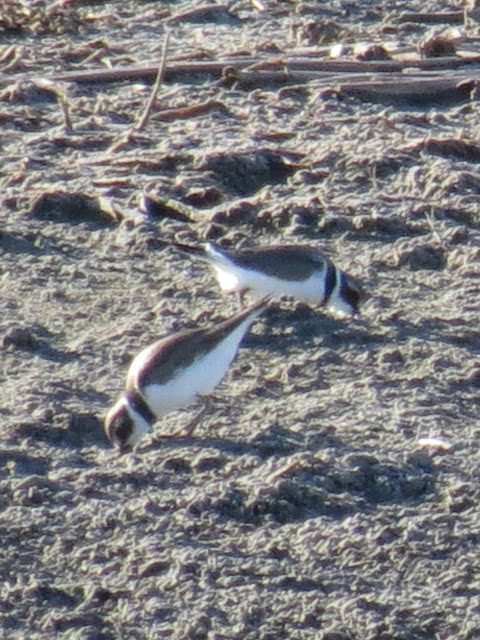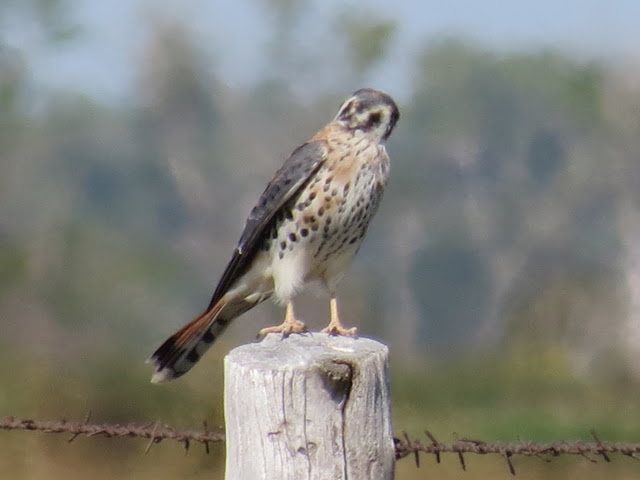Birdie and I got up before the crack of dawn on our last full day traveling together.
We spent the day birding at the Quivira National Wildlife Refuge in central Kansas.The first group of birds we saw was this large flock of white pelicans resting on a sandbar.
A little later we saw them again when they all took flight and moved on.
We saw plovers,
And lots of other shorebirds that were hard to sort out.There were American Goldfinches,
And Pine Siskins
And a female Ring-necked Pheasant crossed our path.Lots of ducks, but the Wilson's Phalarope on the right were new to me.
Unfortunately much of the wetlands is dry this year due to severe drought. It greatly reduces the habitat and food sources for migratory birds. We saw no herons or egrets here.
But we saw several American Kestrels. This guy just ate a grasshopper.
Now he's looking at you,
And he can look at you with the eyes in back of his head too, haha.
Dowitchers and duck,
Red-tailed hawk with a snake.
Another new one to me, the White-faced Ibis.
He's not wearing his white face right now...wrong time of year.
More wading birds,
And more ducks.
The wildflowers were striking. This is a milkweed pod.
Prairie grassesWild Kansas sunflowers
These with the yellow centers are called Compass Plant.
I forget what these tiny asters are called. Birdie has the book, ask her.
Pink flowers with long seed pods....forgot the name.
Lots of them, and they attracted all kinds of butterflies.Monarch
This one flew and acted like a hummingbird. Had to look him up.
It's a White-lined Sphinx Hummingbird Moth!
Mourning Cloak
More wildflowers
There was quite a discussion about these....ask Birdie what we finally decided.
And then there were deer.
After we left the refuge, while passing a farmer's field, Birdie spotted this hawk on the ground.Then we noticed the whole field was full of them.
On the ground,
And in the air.
It's a migrating flock of Swainson's Hawks, stopped to rest in the field overnight.
We went back to watch them take flight in the morning. They were all facing the sun, waiting for it to warm the air so they could catch the thermals.
And we had liftoff!
And now, our routes have split as Birdie follows the hawks south, and I go east. It's been a great summer. What great traveling companions I have had along the way.
I wonder who will get to Oklahoma first, Birdie or the hawks?













































































